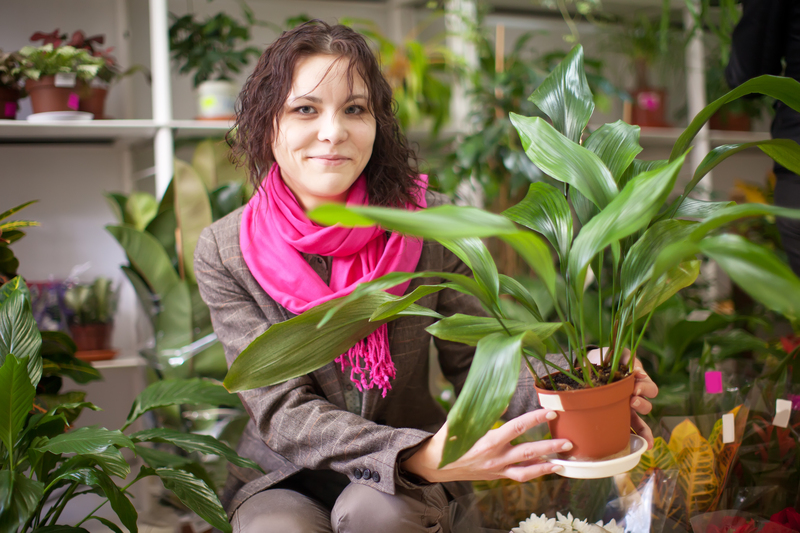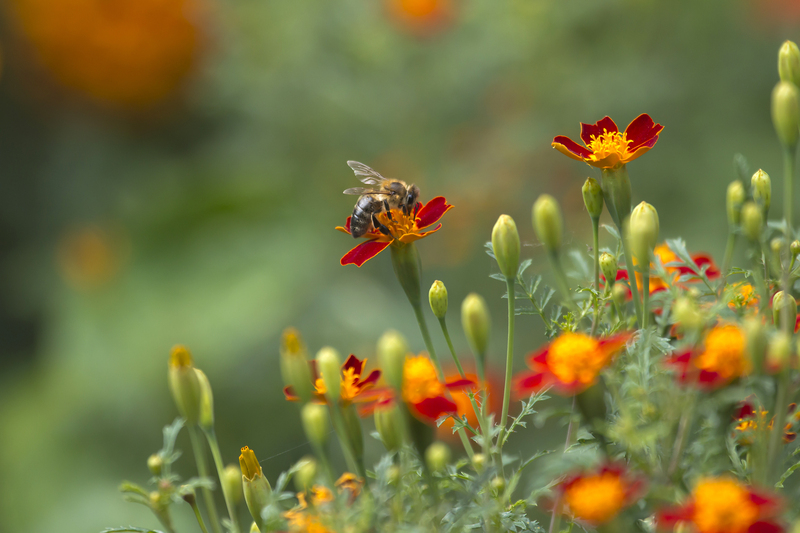Three Essential Tips for Maintaining a Weed-Free Garden
Posted on 31/05/2025
Three Essential Tips for Maintaining a Weed-Free Garden
Are you struggling to keep your garden healthy and beautiful? If so, you're not alone! Weeds are a common problem that frustrates gardeners of all kinds, diminishing the beauty of your landscape and competing with your prized plants for nutrients. In this comprehensive article, you'll uncover the three essential tips for maintaining a weed-free garden. Each tip is backed by expert advice and practical methods, making your gardening experience easier, more enjoyable, and incredibly rewarding.
Why Is a Weed-Free Garden Important?
A weed-free garden not only enhances the appearance of your outdoor space but also promotes hearty plant growth and reduces the risk of pests and diseases. Weeds compete with your flowers, shrubs, and vegetables for light, water, and vital nutrients. Establishing consistent weed management techniques is crucial for thriving gardens and healthy crops, regardless of your gardening expertise or climate.
The Battle Against Weeds: What You Need to Know
Before jumping into specific weed control strategies, it's helpful to understand what weeds are and why they're such persistent foes. Weeds are simply plants growing where they're not wanted--plants with aggressive growth habits and survival mechanisms that allow them to outcompete less resilient species.
Maintaining a weed-free garden requires diligence, the right tools, and a strategic approach. Read on for the top three weed-busting tips every gardener should know!

Tip #1: Prioritize Regular and Thorough Mulching
Mulching is arguably the most effective non-chemical tool for keeping weeds out of your garden. A layer of mulch acts like a protective blanket over soil, blocking weed seeds from sunlight so they can't germinate and grow. Let's break down why mulching is so essential for a weed-free landscape:
Benefits of Mulching in Weed Control
- Suppresses weed growth: Mulch physically prevents weed seeds from sprouting by depriving them of sunlight.
- Retains soil moisture: A thick mulch layer slows evaporation, keeping soil damp, which reduces the need for frequent watering and makes garden maintenance easier.
- Improves soil health: Organic mulches decompose over time, enriching the soil and fostering beneficial organisms that compete with weed roots.
- Regulates soil temperature: Mulch protects plant roots from extreme temperatures, helping your desired plants thrive while weeds struggle.
How to Properly Mulch Your Garden
- Choose the right mulch: Organic options like bark, straw, compost, or shredded leaves work well for most landscapes. Inorganic mulches, such as landscape fabric or gravel, can provide longer-lasting weed suppression in certain areas.
- Prepare the ground: Before applying mulch, remove all visible weeds and water the soil deeply to ensure your plants get off to a strong start.
- Apply a generous layer: Spread mulch about 2-4 inches thick. Avoid piling it against plant stems, as this can cause rot or disease.
- Replenish regularly: Organic mulch breaks down over time. Top up your mulch annually or as needed to maintain coverage.
Pro Tip: For vegetable gardens, use straw or grass clippings, while flower beds benefit from bark or wood chips. This will not only help in keeping your garden free from weeds, but also boost soil fertility!
Tip #2: Master Efficient Hand-Weeding Techniques
No matter how well you mulch, some weeds are bound to sneak in. That's why learning how to weed effectively is a vital skill for any gardener. Manual weeding is an environmentally friendly method to ensure a weed-free garden and prevent the spread of invasive plants.
The Importance of Timing in Weed Removal
- Weed when moist: The best time to weed is after a rain or watering when the soil is damp. This makes it easier to pull out the entire weed, roots and all.
- Act early and often: Remove weeds as soon as you spot them. Young weeds are easier to eradicate and less likely to have set seed.
- Be thorough: Pay attention to garden edges, hedgerows, and gravel paths--these forgotten spots are favorite hideouts for persistent weeds.
Hand-Weeding Best Practices
- Use the right tools: Invest in a high-quality hand weeder, hoe, or trowel to make uprooting weeds less strenuous and more effective.
- Pull gently but firmly: Grasp weeds close to the base and pull slowly to minimize breakage and maximize root removal. Some weeds regenerate if you leave behind even a tiny root piece.
- Dispose responsibly: Don't toss pulled weeds into your compost pile if they have seeds or are invasive species. Instead, bag them for disposal or burn, if permitted.
Tip #3: Employ Smart Planting and Densely Pack Your Beds
An underestimated strategy for achieving a weed-free landscape is simply outcompeting weeds with healthy, vigorous plants. Dense planting and smart plant selection can dramatically reduce open soil, leaving little room for unwanted intruders to take hold.
Benefits of Dense Planting for Preventing Weeds
- Shades out weed seeds: Close spacing ensures plant foliage quickly covers the soil, blocking out the sunlight that weeds need to germinate and grow.
- Creates a competitive environment: Strong, established plants with deep roots leave fewer resources available for weeds, crowding them out naturally.
- Reduces maintenance: As plant canopies mature, less weeding and watering is required since there's minimal bare soil exposed.
How to Use Dense Planting to Maintain a Weed-Free Garden
- Follow recommended spacing: While overcrowding can stunt growth, you should reduce spacing slightly for annuals and some perennials to maximize coverage without sacrificing plant health.
- Choose ground covers: Incorporate fast-spreading creepers like creeping thyme, ajuga, or sweet woodruff for perennial beds. In vegetable gardens, try spreading crops like squash or cucumbers.
- Use companion planting: Mix slow-growing species with quick-starters--early season plants provide weed-shading before slower growers fill in.
- Fill in gaps: Each planting season, fill any bare spots with annuals or additional ground covers.
Expert Advice: Diversity is your best defense. A varied garden with flowers, shrubs, edibles, and ground covers ensures no single weed can dominate your beds or borders.
Bonus Tips for Weed Prevention and Maintenance
- Install landscape fabric: For persistent problem areas, a layer of high-quality weed barrier fabric beneath mulch can block even the toughest perennial weeds.
- Water wisely: Use drip irrigation or soaker hoses that target plant roots, discouraging weed growth in the surrounding soil.
- Edge your beds: Maintain crisp boundaries with edging materials--metal, stone, or deep spade cuts--to prevent turf and grass weeds from creeping in.
- Inspect plant purchases: Always check nursery plants for "hitchhiker" weeds before adding them to your landscape.

Common Weeding Mistakes to Avoid
- Letting weeds go to seed: A single weed can produce thousands of seeds, quickly leading to a new infestation.
- Disturbing the soil frequently: Excessive digging brings dormant weed seeds to the surface, where they sprout in the light.
- Neglecting perennial weeds: Unlike annual weeds, perennials come back year after year if not fully removed, including their roots.
Conclusion: Achieve a Healthier, Weed-Free Garden for Good
With these three essential weed control tips--regular mulching, skillful hand-weeding, and smart, dense planting--you're well on your way to cultivating a stunning and weed-free garden. Remember, the key is consistency and a proactive approach. Combine these practices with routine garden checks, and soon, weeds will be a thing of the past in your lush, flourishing landscape.
Ready to enjoy the full beauty of your garden without the constant battle against weeds? Put these weed prevention strategies into action and experience the satisfaction of a vibrant, healthy garden all season long. Happy gardening!

